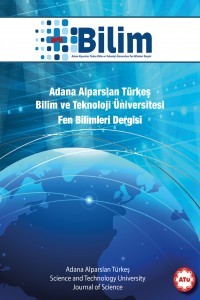Katı atık toplama sıklığının toplama-taşıma maliyetine etkisi
Küresel ölçekte 2010 yılında toplamda 1,3 milyar ton katı atık üretilmiştir. Mevcut durumda bu katı atıkların %84’ü toplanmakta ve %15’i geri dönüştürülebilmektedir. Bir entegre katı atık yönetim sistemi içerisinde maliyeti en yüksek kalemi atıkların toplanması ve taşınması oluşturmaktadır ve maliyetleri toplam atık yönetimi içerisinde %80’e kadar ulaşabilmektedir. Türkiye’de atıkların toplanması ilçe belediyeleri tarafından yapılmakta veya yaptırılmaktadır. Yakıt giderleri, taşıt amortismanı ve personel giderleri atık toplamanın başlıca işletme maliyet bileşenleridir. Toplanan atık miktarı, atığın fiziksel özellikleri, toplama araçlarının tipleri, kapasiteleri ve yerleşim yeri ile aktarma merkezi arasındaki mesafe maliyeti etkileyen diğer parametrelerdir. Bu çalışmada katı atık toplama sıklığının toplama-taşıma maliyetine etkisini belirleyebilmek adına gerçek koşullara uygun senaryo geliştirilmiş, aktarmalı ve aktarmasız taşıma durumları için maliyet analizi gerçekleştirilmiştir. Senaryonun gerçekçi olması için araç hacmi, atık yoğunluğu, atık miktarı, yerleşim yeri ve aktarma merkezi mesafesi gibi parametreler; literatür taraması sonrasında, özel sektör ve yerel yönetimlerde yetkili kişilerden alınan bilgilerle oluşturulmuştur. Çalışmada toplam proje ömrü 30 yıl olarak kabul edilmiş olup, 6 yılda 1 ihalenin yenilenmesi öngörülmüştür. 8 m3 kasalı toplama araçlarının kullandığı, 100 ton/gün atık üretimi olduğu ve aktarma merkezinin yerleşim yerine 10 km uzaklıkta bulunduğu kabulüyle aktarmalı ve aktarmasız taşıma için toplama ve taşıma maliyetleri hesaplanmış, toplama sıklığının günde birden haftada bire düşürülmesi durumunda yaşanacak değişimler incelenmiştir. Bertaraf tesisinin yerleşim yerinden 30 km mesafede olduğu durumlarda taşıma sıklığının günde birden, haftada bire düşürülmesi toplama ve taşıma maliyetlerini neredeyse %30 oranında düşürdüğü belirlenmiştir.
Anahtar Kelimeler:
Aktarma merkezi, atık toplama sıklığı, maliyet, taşıma, toplama
The effect of solid waste collection frequency on collection –transportation cost
In 2010, 1.3 billion tons of solid waste was produced on a global scale. 84% of these solid wastes were collected and 15% were recycled. In an integrated solid waste management system, the highest cost is the collection and transportation of wastes, and their ratio can reach up to 80% of total waste management cost. Major components of waste collection operational cost are fuel cost, truck amortization and personnel cost. The amount of waste collected, the physical characteristics of the waste, types of collection trucks, truck capacities and the distance between the city and the transfer station are other parameters affecting the cost. In this study, in order to determine the effect of solid waste collection frequency on total collection and transportation cost, a realistic scenario was developed and cost analysis was carried out for both collection of waste with and without transfer station cases. Parameters such as truck volume, waste density, waste amount, distance between city and transfer station were determined after the literature review was done and informations were taken from the authorized persons in the private sector and local governments to achieve realistic conditions in scenario. During this study, the total project life is estimated to be 30 years, and the renewal of 6 years for 1 tender is foreseen. The necessary calculations have been made for the scenario where the production of waste is 100 tons/day and they are collected by 8 m3 trucks and the transfer station is located 10 km away from the city. Collection and transportation costs were calculated for two scenarios. First scenario includes transfer station while second is not. In the following calculations, collection frequency was reduced from once per day to once per week. When waste collection frequency is decreased from everyday to once a week, where the disposal facility is located 30 km away from the city, it has been found that total collection and transportation cost reduced the almost 30 %.
Keywords:
transfer station, waste collection frequency, collection, transportation,
___
- [1] Öztürk İ. (2010). Katı Atık Yönetimi ve AB Uyumlu Uygulamaları. İSTAÇ A.Ş. Teknik Kitaplar Serisi 2, İstanbul.
- [2] Jouhara H., Czajczynska D., Ghazal H., Krzyzynska R., Anguilano L. (2017). Municipal Waste Management Systems For Domestic Use, pp.485-486.
- [3] Belien J., De Boeck L., Ackere J. (2011). Municipal Solid aste Collection Problems: A Literature Review, Hub Research Papers 2011/34, Brüksel.
- [4] IEA, Internatiınal Energy Agency. (2016). Energy Technology Perspectives Annex I: Municipal Solid Waste Potential In Cities.
- [5] Hoornweg D., Bhada-Tata P. (2012). What A Waste, A Global Review Of Solid Waste Management, World Bank Urban Development & Local Government Unit.
- [6] TÜİK. (2017). http://www.tuik.gov.tr/PreHaberBultenleri.do?id=24876 (Erişim Tarihi 25.06.2018)
- [7] https://www.e-icisleri.gov.tr/Anasayfa/MulkiIdariBolumleri.aspx (Erişim Tarihi 03.07.2018)
- [8] Turan N. G., Çoruh S., Akdemir A., Ergun O. N. (2008). Municipal Solid Waste Management Strategies In Turkey, pp.466-467.
- [9] Yaman C. (2017). Costs Pertaining To The Collection, Transportation And Disposal Of Domestic Solid Wastes And General City Cleaning In The City Of İstanbul, pp.
- [10]http://www.calismamevzuati.com/2017/01/2017_asgari_ucret_hesaplama_haber131-html/ (Erişim Tarihi 26.12.2017)
- Yayın Aralığı: Yılda 2 Sayı
- Başlangıç: 2018
- Yayıncı: Adana Alparslan Türkeş Bilim ve Teknoloji Üniversitesi
Sayıdaki Diğer Makaleler
İpek ABASIKELEŞ TURGUT, Cansu CANBOLAT
Şalgam suyunun üretim yöntemleri ve biyoaktif bileşenleri
Dilem TANRISEVEN, Sevgin DIBLAN, Serkan SELLİ, Haşim KELEBEK
Yüksek dayanımlı betonarme kolonların analizi için beton gerilme-birim deformasyon modeli
Katı atık toplama sıklığının toplama-taşıma maliyetine etkisi
Mert KOLUKISAOĞLU, Kadriye Elif MAÇİN, İbrahim DEMİR
Düzensiz sipariş gelişlerinin risk analizi ve önceliklendirilmesi
